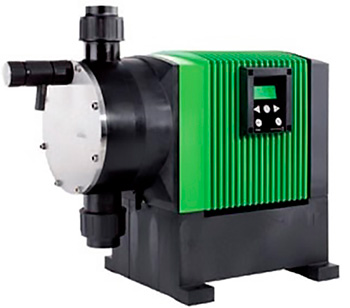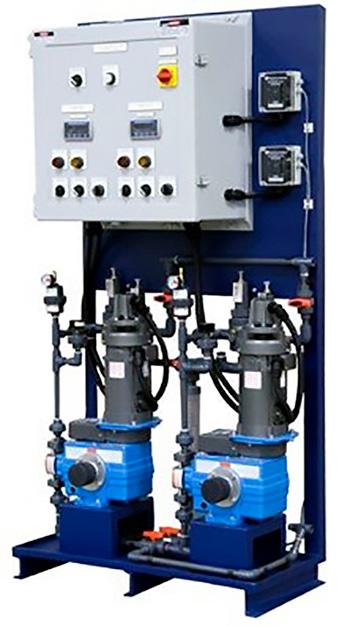HI Pump FAQs
Hydraulic Institute
05/22/2017
Q. What types of pumps are used to disinfect or treat water?
A. About two thirds of the earth’s surface is covered by water, but most of it is not potable. The purpose of a water treatment system is to provide quality water for safe consumption (potable) or for safe release to the environment (effluent). Water treatment to produce potable water from surface water typically consists of physical and chemical separation processes to remove constituents from the water, and to kill or inactivate disease-causing microorganisms and viruses. Physical removal can be accomplished with use of flash mixing, flocculation, sedimentation basins, sand filters or membranes. In both water and wastewater treatment plants, metering pumps are recommended for the disinfection process. Disinfection is normally one of the final processes before discharge to the distribution system or release of the effluent. This final step ensures that any disease causing or pathogenic microorganisms are substantially reduced and that the water is safe to consume or release to the environment. Image 1. Chemical feed pump (Images courtesy of Hydraulic Institute)
Image 1. Chemical feed pump (Images courtesy of Hydraulic Institute) Image 2. Chemical feed pump assembly
Image 2. Chemical feed pump assemblyQ. What are the items to consider when selecting a pump for a wastewater treatment process?
A. Water or wastewater treatment plants have many systems of varying pumping requirements. Some pumping characteristics that are important for different processes:- ability to handle high to low and variable viscosity
- ability to pump solids
- sealless pumping
- self-priming
- flow repeatability
- The process application
- fluid characteristics
- batch or continuous process
- The system hydraulics
- operating envelope
- system curves
- The selection of pump and appropriate controls to meet the process application and operating envelope
- The material selection to ensure reliable operation
- casing – ductile iron
- impeller – aluminum bronze, nickel aluminum bronze or 316 stainless steel
- shaft – stainless steel
- seal – packing or mechanical
See other HI Pump FAQs articles here.
